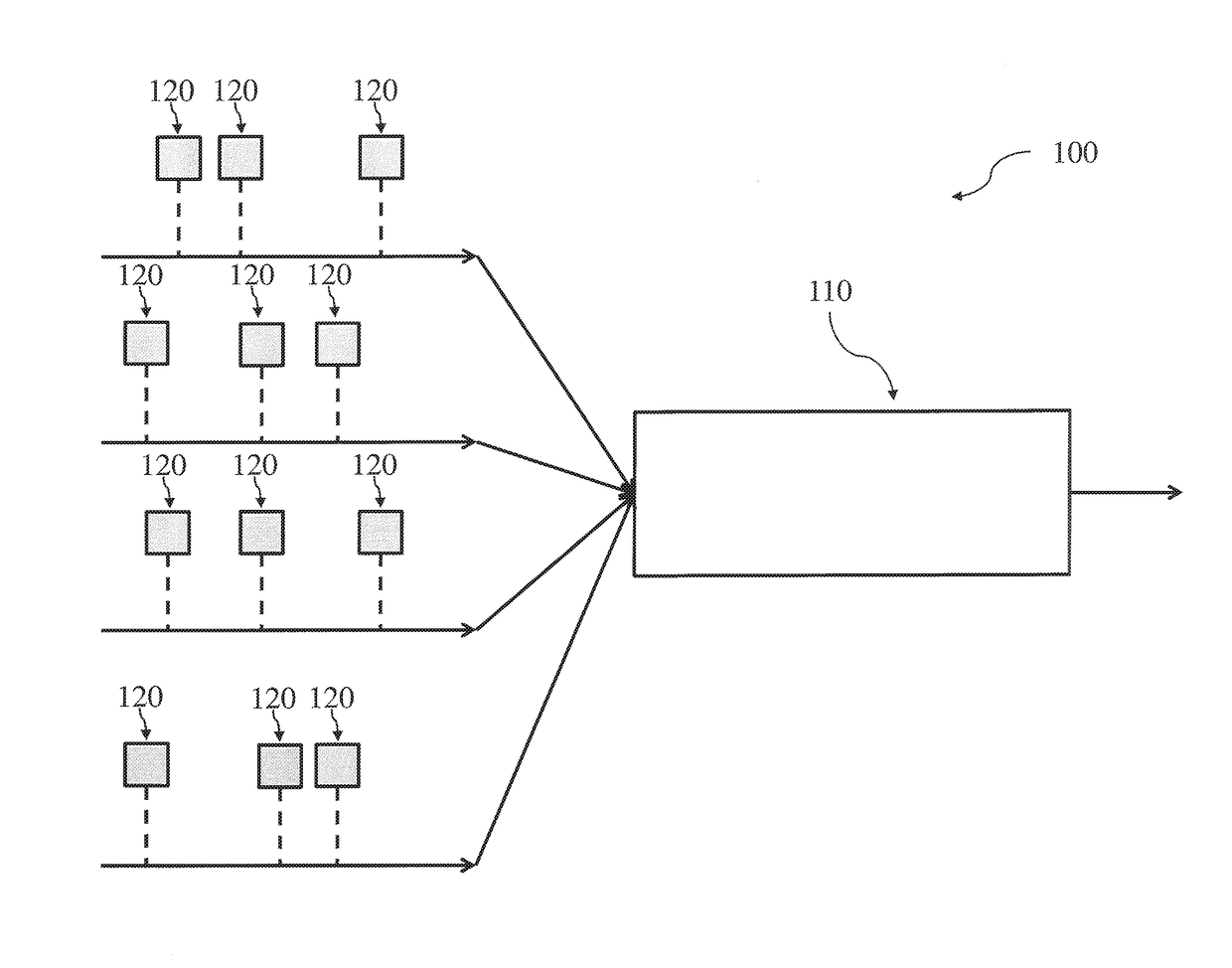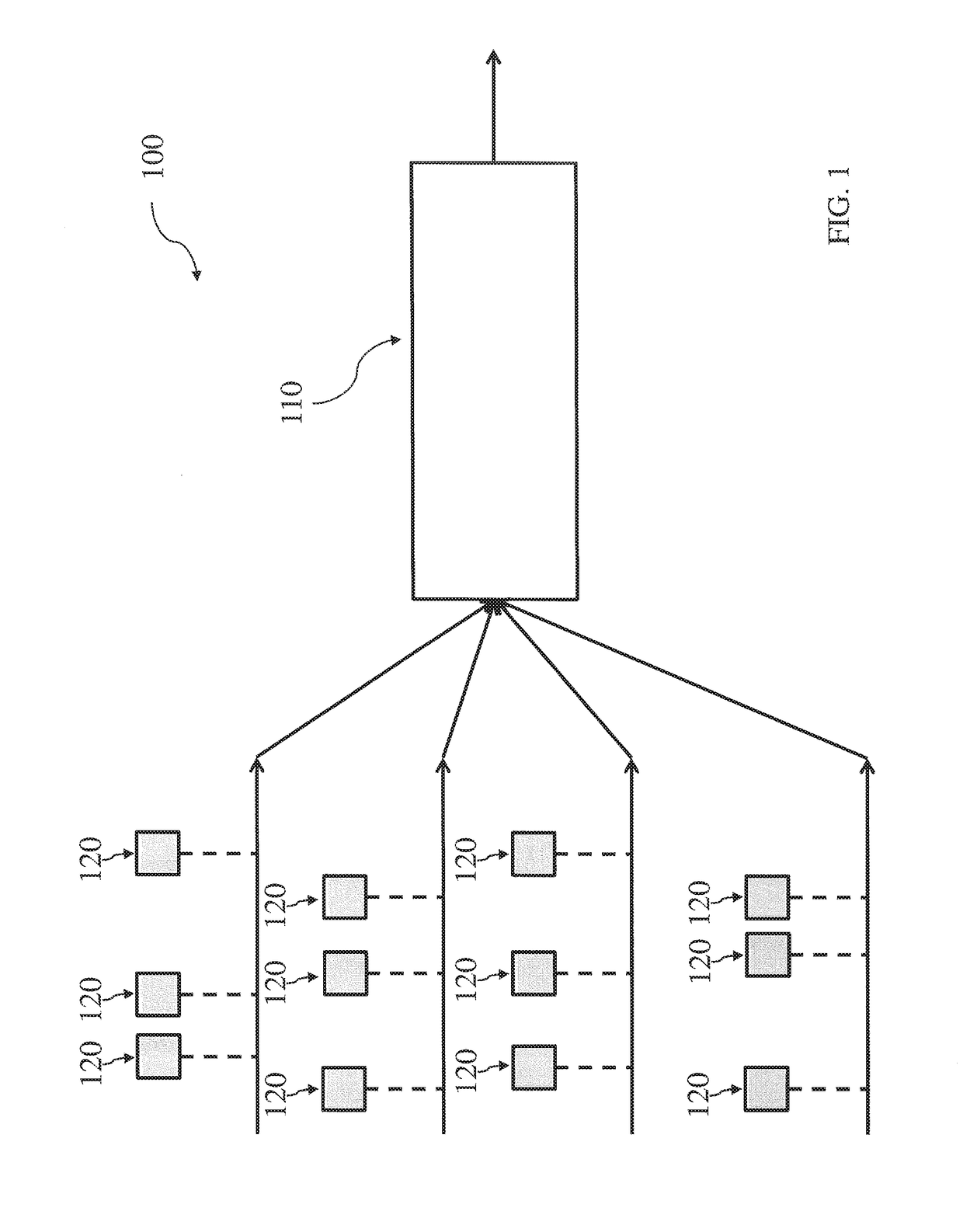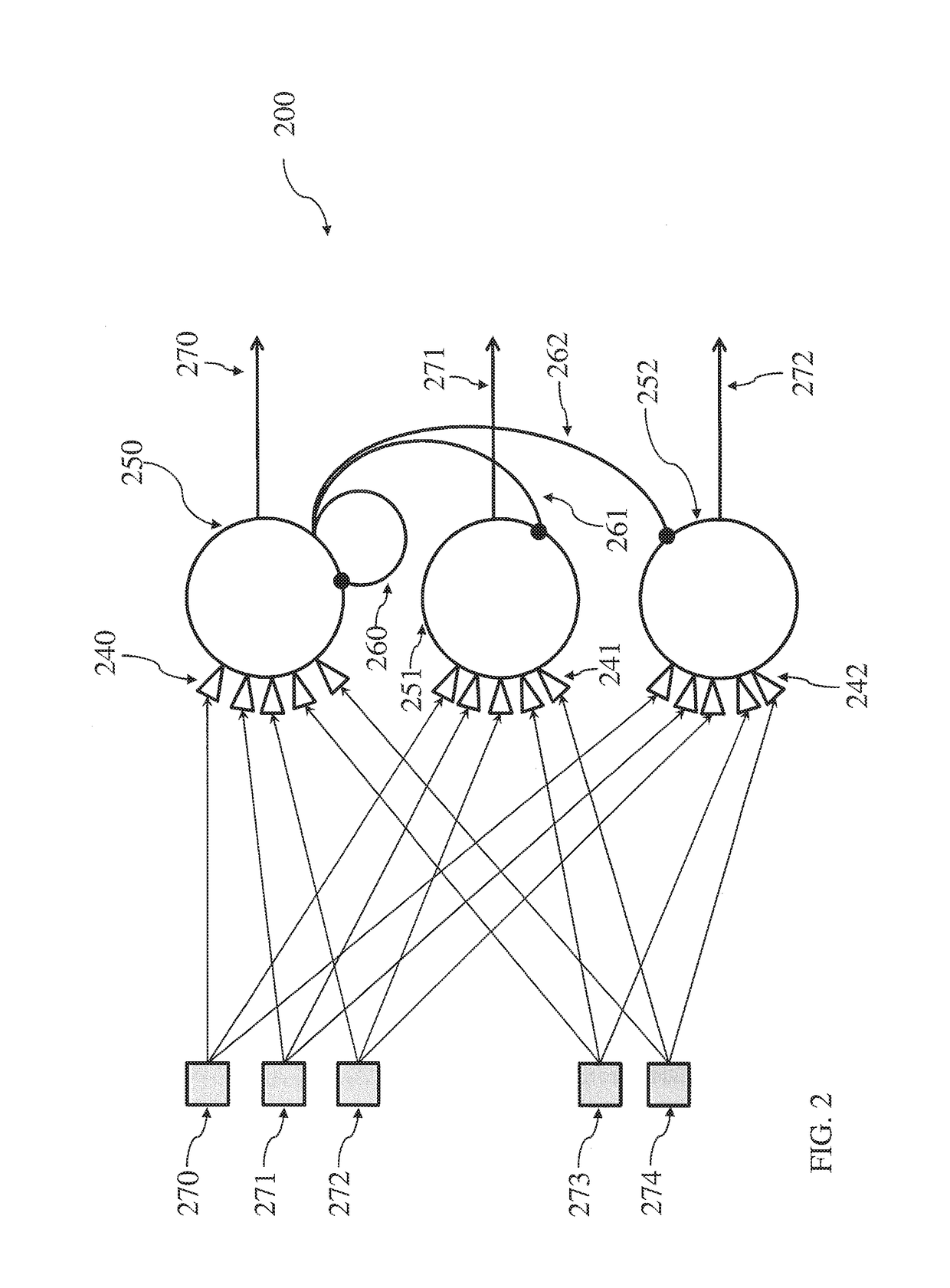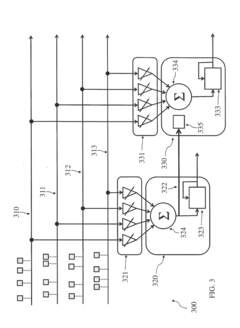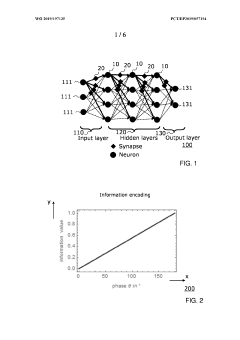Neuromorphic Computing Materials in Today's Regulatory Landscape
OCT 27, 20259 MIN READ
Generate Your Research Report Instantly with AI Agent
Patsnap Eureka helps you evaluate technical feasibility & market potential.
Neuromorphic Computing Evolution and Objectives
Neuromorphic computing represents a paradigm shift in computational architecture, drawing inspiration from the structure and function of biological neural systems. The evolution of this field can be traced back to the 1980s when Carver Mead first introduced the concept of using electronic circuits to mimic neurobiological architectures. This pioneering work laid the foundation for what would become a transformative approach to computing that fundamentally differs from traditional von Neumann architectures.
The historical trajectory of neuromorphic computing has been marked by several significant milestones. The 1990s saw the development of early neuromorphic chips that implemented basic neural functions. By the early 2000s, researchers had begun exploring more sophisticated implementations, incorporating principles of spike-timing-dependent plasticity (STDP) and other neurobiological learning mechanisms. The 2010s witnessed an acceleration in development, with major initiatives such as IBM's TrueNorth, Intel's Loihi, and BrainScaleS in Europe demonstrating increasingly complex neuromorphic systems.
Materials science has played a crucial role in this evolution. Traditional CMOS technology initially dominated implementations, but limitations in energy efficiency and scalability prompted exploration of alternative materials. The emergence of memristive devices, phase-change materials, and spintronic components has opened new possibilities for creating more efficient and biologically realistic neuromorphic systems.
The primary objectives driving neuromorphic computing research are multifaceted. Energy efficiency stands as a paramount goal, with neuromorphic systems potentially offering orders of magnitude improvement over conventional computing architectures for certain tasks. The human brain operates on approximately 20 watts of power while performing complex cognitive functions that would require megawatts in traditional computing systems—a benchmark that neuromorphic computing aspires to approach.
Another key objective is achieving real-time processing of complex, unstructured data. Neuromorphic systems excel at parallel processing and can potentially handle sensory data streams in ways that mimic biological perception. This capability makes them particularly suited for applications in computer vision, speech recognition, and other pattern recognition tasks.
The field also aims to develop systems capable of unsupervised learning and adaptation. Unlike conventional AI systems that typically require extensive training on labeled datasets, neuromorphic computing seeks to create architectures that can learn from their environment continuously and autonomously, similar to biological systems.
Looking forward, the technical trajectory of neuromorphic computing is increasingly focused on developing materials and architectures that can support these ambitious objectives while addressing regulatory considerations around energy consumption, environmental impact, and sustainability in advanced computing technologies.
The historical trajectory of neuromorphic computing has been marked by several significant milestones. The 1990s saw the development of early neuromorphic chips that implemented basic neural functions. By the early 2000s, researchers had begun exploring more sophisticated implementations, incorporating principles of spike-timing-dependent plasticity (STDP) and other neurobiological learning mechanisms. The 2010s witnessed an acceleration in development, with major initiatives such as IBM's TrueNorth, Intel's Loihi, and BrainScaleS in Europe demonstrating increasingly complex neuromorphic systems.
Materials science has played a crucial role in this evolution. Traditional CMOS technology initially dominated implementations, but limitations in energy efficiency and scalability prompted exploration of alternative materials. The emergence of memristive devices, phase-change materials, and spintronic components has opened new possibilities for creating more efficient and biologically realistic neuromorphic systems.
The primary objectives driving neuromorphic computing research are multifaceted. Energy efficiency stands as a paramount goal, with neuromorphic systems potentially offering orders of magnitude improvement over conventional computing architectures for certain tasks. The human brain operates on approximately 20 watts of power while performing complex cognitive functions that would require megawatts in traditional computing systems—a benchmark that neuromorphic computing aspires to approach.
Another key objective is achieving real-time processing of complex, unstructured data. Neuromorphic systems excel at parallel processing and can potentially handle sensory data streams in ways that mimic biological perception. This capability makes them particularly suited for applications in computer vision, speech recognition, and other pattern recognition tasks.
The field also aims to develop systems capable of unsupervised learning and adaptation. Unlike conventional AI systems that typically require extensive training on labeled datasets, neuromorphic computing seeks to create architectures that can learn from their environment continuously and autonomously, similar to biological systems.
Looking forward, the technical trajectory of neuromorphic computing is increasingly focused on developing materials and architectures that can support these ambitious objectives while addressing regulatory considerations around energy consumption, environmental impact, and sustainability in advanced computing technologies.
Market Analysis for Brain-Inspired Computing Solutions
The neuromorphic computing market is experiencing significant growth, driven by increasing demand for brain-inspired computing solutions across various industries. Current market valuations place the global neuromorphic computing sector at approximately $3.2 billion in 2023, with projections indicating a compound annual growth rate of 24.7% through 2030. This remarkable growth trajectory is fueled by the expanding applications in artificial intelligence, machine learning, and edge computing environments where traditional computing architectures face limitations.
Healthcare represents one of the most promising market segments, with neuromorphic solutions being deployed for medical imaging analysis, patient monitoring systems, and drug discovery processes. The integration of brain-inspired computing in these applications has demonstrated up to 40% improvement in diagnostic accuracy while reducing power consumption by 60-80% compared to conventional computing systems.
The automotive industry has emerged as another significant adopter, incorporating neuromorphic processors in advanced driver assistance systems (ADAS) and autonomous vehicle platforms. Market research indicates that approximately 35% of automotive manufacturers are currently exploring or implementing neuromorphic solutions to enhance real-time decision-making capabilities in their vehicles.
Data centers and cloud service providers are increasingly turning to neuromorphic computing to address energy efficiency challenges. With data centers consuming nearly 1% of global electricity, the potential 90% reduction in power requirements offered by neuromorphic systems presents a compelling value proposition. Major cloud providers have initiated pilot programs integrating neuromorphic accelerators, with early results showing 30-50% improvements in performance-per-watt metrics for specific AI workloads.
Consumer electronics represents an emerging market segment with substantial growth potential. Smartphone manufacturers are exploring neuromorphic chips for on-device AI processing, enabling enhanced privacy features and reduced cloud dependency. Market analysts predict that by 2027, approximately 15% of premium smartphones will incorporate some form of neuromorphic processing elements.
Regional analysis reveals North America currently dominates the market with 42% share, followed by Europe (28%) and Asia-Pacific (24%). However, the Asia-Pacific region is expected to witness the fastest growth rate of 29.3% annually, driven by substantial investments in AI infrastructure in China, Japan, and South Korea.
Customer adoption barriers include integration challenges with existing systems, limited developer ecosystems, and regulatory uncertainties surrounding novel computing architectures. Despite these challenges, market surveys indicate that 68% of enterprise technology decision-makers consider neuromorphic computing a strategic priority for their organization's future computing infrastructure.
Healthcare represents one of the most promising market segments, with neuromorphic solutions being deployed for medical imaging analysis, patient monitoring systems, and drug discovery processes. The integration of brain-inspired computing in these applications has demonstrated up to 40% improvement in diagnostic accuracy while reducing power consumption by 60-80% compared to conventional computing systems.
The automotive industry has emerged as another significant adopter, incorporating neuromorphic processors in advanced driver assistance systems (ADAS) and autonomous vehicle platforms. Market research indicates that approximately 35% of automotive manufacturers are currently exploring or implementing neuromorphic solutions to enhance real-time decision-making capabilities in their vehicles.
Data centers and cloud service providers are increasingly turning to neuromorphic computing to address energy efficiency challenges. With data centers consuming nearly 1% of global electricity, the potential 90% reduction in power requirements offered by neuromorphic systems presents a compelling value proposition. Major cloud providers have initiated pilot programs integrating neuromorphic accelerators, with early results showing 30-50% improvements in performance-per-watt metrics for specific AI workloads.
Consumer electronics represents an emerging market segment with substantial growth potential. Smartphone manufacturers are exploring neuromorphic chips for on-device AI processing, enabling enhanced privacy features and reduced cloud dependency. Market analysts predict that by 2027, approximately 15% of premium smartphones will incorporate some form of neuromorphic processing elements.
Regional analysis reveals North America currently dominates the market with 42% share, followed by Europe (28%) and Asia-Pacific (24%). However, the Asia-Pacific region is expected to witness the fastest growth rate of 29.3% annually, driven by substantial investments in AI infrastructure in China, Japan, and South Korea.
Customer adoption barriers include integration challenges with existing systems, limited developer ecosystems, and regulatory uncertainties surrounding novel computing architectures. Despite these challenges, market surveys indicate that 68% of enterprise technology decision-makers consider neuromorphic computing a strategic priority for their organization's future computing infrastructure.
Current Neuromorphic Materials Landscape and Barriers
The neuromorphic computing materials landscape is currently dominated by several key material categories, each with distinct properties and applications. Traditional CMOS-based materials continue to serve as the foundation for many neuromorphic systems, offering established fabrication processes and integration capabilities. However, these materials face significant limitations in power efficiency and neural mimicry, creating barriers to achieving true brain-like computing.
Emerging materials such as phase-change materials (PCMs), resistive random-access memory (RRAM), and ferroelectric materials have demonstrated promising characteristics for neuromorphic applications. PCMs like Ge2Sb2Te5 exhibit excellent multi-state capabilities essential for synaptic weight storage but struggle with energy consumption during phase transitions. RRAM materials, including metal oxides like HfO2 and TiO2, offer excellent scalability and compatibility with CMOS processes while providing the necessary analog behavior for synaptic functions.
Memristive materials represent another critical category in the neuromorphic landscape, with metal-oxide interfaces showing particular promise for implementing spike-timing-dependent plasticity (STDP). These materials can maintain states without power consumption, addressing a key requirement for energy-efficient neural networks. However, challenges in fabrication consistency and long-term stability have limited their widespread adoption.
Two-dimensional materials such as graphene and transition metal dichalcogenides (TMDs) are emerging as potential game-changers due to their unique electronic properties and ultra-thin profiles. These materials enable novel device architectures but face significant manufacturing barriers when scaling to production volumes.
The primary technical challenges across all neuromorphic materials include reliability issues, cycle endurance limitations, and signal variability. Many promising materials demonstrate excellent performance in laboratory settings but fail to maintain consistent properties over extended operational periods, creating significant barriers to commercialization.
Integration challenges represent another substantial barrier, as novel neuromorphic materials must interface with existing semiconductor technologies. The development of compatible fabrication processes that don't compromise the unique properties of these materials remains a significant technical hurdle.
Regulatory considerations further complicate the landscape, particularly regarding novel nanomaterials with limited toxicological profiles. Materials containing rare earth elements face additional scrutiny due to supply chain concerns and environmental impact during extraction and processing. These regulatory barriers can significantly delay the commercialization timeline for promising neuromorphic computing materials.
Emerging materials such as phase-change materials (PCMs), resistive random-access memory (RRAM), and ferroelectric materials have demonstrated promising characteristics for neuromorphic applications. PCMs like Ge2Sb2Te5 exhibit excellent multi-state capabilities essential for synaptic weight storage but struggle with energy consumption during phase transitions. RRAM materials, including metal oxides like HfO2 and TiO2, offer excellent scalability and compatibility with CMOS processes while providing the necessary analog behavior for synaptic functions.
Memristive materials represent another critical category in the neuromorphic landscape, with metal-oxide interfaces showing particular promise for implementing spike-timing-dependent plasticity (STDP). These materials can maintain states without power consumption, addressing a key requirement for energy-efficient neural networks. However, challenges in fabrication consistency and long-term stability have limited their widespread adoption.
Two-dimensional materials such as graphene and transition metal dichalcogenides (TMDs) are emerging as potential game-changers due to their unique electronic properties and ultra-thin profiles. These materials enable novel device architectures but face significant manufacturing barriers when scaling to production volumes.
The primary technical challenges across all neuromorphic materials include reliability issues, cycle endurance limitations, and signal variability. Many promising materials demonstrate excellent performance in laboratory settings but fail to maintain consistent properties over extended operational periods, creating significant barriers to commercialization.
Integration challenges represent another substantial barrier, as novel neuromorphic materials must interface with existing semiconductor technologies. The development of compatible fabrication processes that don't compromise the unique properties of these materials remains a significant technical hurdle.
Regulatory considerations further complicate the landscape, particularly regarding novel nanomaterials with limited toxicological profiles. Materials containing rare earth elements face additional scrutiny due to supply chain concerns and environmental impact during extraction and processing. These regulatory barriers can significantly delay the commercialization timeline for promising neuromorphic computing materials.
Contemporary Neuromorphic Material Implementations
01 Phase-change materials for neuromorphic computing
Phase-change materials exhibit properties that make them suitable for neuromorphic computing applications. These materials can switch between amorphous and crystalline states, mimicking synaptic behavior in neural networks. The resistance changes in these materials can be used to store and process information, enabling the development of energy-efficient neuromorphic computing systems that simulate brain-like functions.- Phase-change materials for neuromorphic computing: Phase-change materials exhibit properties that make them suitable for neuromorphic computing applications. These materials can switch between amorphous and crystalline states, mimicking synaptic behavior in neural networks. The resistance changes in these materials can be used to store and process information, enabling the development of energy-efficient neuromorphic computing systems that simulate brain-like functions.
- Memristive materials and devices: Memristive materials are fundamental to neuromorphic computing as they can maintain memory states based on the history of current flow. These materials exhibit variable resistance properties that can be used to mimic synaptic plasticity in neural networks. Memristive devices based on oxide materials, metal-insulator-metal structures, and other novel compositions enable efficient implementation of neuromorphic architectures with low power consumption and high density.
- 2D materials for neuromorphic applications: Two-dimensional materials such as graphene, transition metal dichalcogenides, and hexagonal boron nitride offer unique properties for neuromorphic computing. Their atomically thin structure, tunable electronic properties, and compatibility with existing fabrication techniques make them promising candidates for building neuromorphic devices. These materials enable the development of flexible, scalable, and energy-efficient neuromorphic systems with enhanced computational capabilities.
- Spintronic materials for brain-inspired computing: Spintronic materials utilize electron spin properties to store and process information, offering advantages for neuromorphic computing applications. These materials enable magnetic domain-based memory and computing elements that can mimic neural functions with extremely low power consumption. Spintronic neuromorphic devices can perform both memory and computational functions, potentially overcoming the von Neumann bottleneck in conventional computing architectures.
- Organic and biomimetic materials: Organic and biomimetic materials offer unique advantages for neuromorphic computing, including flexibility, biocompatibility, and self-assembly properties. These materials can be engineered to exhibit synaptic behaviors similar to biological neural systems. Polymer-based memristive devices, protein-based memory elements, and other biomimetic structures enable the development of neuromorphic systems that more closely resemble biological neural networks in both form and function.
02 Memristive materials and devices
Memristive materials are fundamental to neuromorphic computing as they can maintain a state of internal resistance based on the history of applied voltage and current. These materials enable the creation of artificial synapses and neurons that can process and store information simultaneously, similar to biological neural systems. Memristive devices offer advantages in terms of power efficiency, scalability, and integration with conventional CMOS technology.Expand Specific Solutions03 2D materials for neuromorphic applications
Two-dimensional materials such as graphene, transition metal dichalcogenides, and hexagonal boron nitride offer unique properties for neuromorphic computing. Their atomic-scale thickness, tunable electronic properties, and mechanical flexibility make them promising candidates for building neuromorphic devices. These materials can be engineered to exhibit synaptic behaviors and can be integrated into flexible and transparent neuromorphic systems.Expand Specific Solutions04 Oxide-based neuromorphic materials
Metal oxides and complex oxide materials are widely used in neuromorphic computing due to their diverse electronic properties and compatibility with existing semiconductor manufacturing processes. These materials can form resistive switching elements that mimic synaptic functions. Oxide-based neuromorphic devices can achieve high density, low power consumption, and reliable operation, making them suitable for large-scale neuromorphic systems.Expand Specific Solutions05 Organic and biomimetic materials for neuromorphic computing
Organic and biomimetic materials offer a bio-inspired approach to neuromorphic computing. These materials can be designed to mimic the structure and function of biological neurons and synapses. They often provide advantages such as biocompatibility, flexibility, and self-healing properties. Organic neuromorphic materials enable the development of brain-like computing systems that can operate in diverse environments and potentially interface with biological systems.Expand Specific Solutions
Leading Organizations in Neuromorphic Computing Materials
Neuromorphic computing materials are evolving rapidly in today's regulatory landscape, with the market currently in an early growth phase characterized by significant R&D investments and emerging commercial applications. The global market is projected to reach substantial scale as brain-inspired computing gains traction in AI applications. Leading players like IBM, Samsung, and Hewlett Packard Enterprise are driving technological advancement through mature research programs, while specialized firms such as Syntiant are developing targeted neuromorphic solutions. Academic institutions including Peking University, Tsinghua University, and research organizations like CNRS are contributing fundamental breakthroughs. The regulatory environment remains in flux, with frameworks still developing to address the unique challenges of brain-inspired computing architectures, particularly regarding energy efficiency standards and AI governance.
International Business Machines Corp.
Technical Solution: IBM has pioneered neuromorphic computing materials through its TrueNorth and subsequent Brain-inspired chips. Their approach integrates phase-change memory (PCM) materials with CMOS technology to create energy-efficient neural networks. IBM's neuromorphic architecture employs specialized materials that mimic synaptic behavior, utilizing metal-oxide memristors and spintronic devices that can maintain states without constant power. Their regulatory compliance framework addresses both material safety and data governance concerns, with particular attention to rare earth elements used in their neuromorphic systems. IBM collaborates with regulatory bodies to establish standards for neuromorphic computing materials, ensuring their technologies meet environmental regulations while advancing computational capabilities.
Strengths: Extensive research infrastructure and established relationships with regulatory bodies provide IBM advantages in navigating complex compliance landscapes. Their vertical integration allows for comprehensive material lifecycle management. Weaknesses: Reliance on rare earth materials creates supply chain vulnerabilities under increasing regulatory scrutiny for environmental impact and sourcing ethics.
Samsung Electronics Co., Ltd.
Technical Solution: Samsung has developed proprietary neuromorphic computing materials focusing on resistive random-access memory (RRAM) and magnetoresistive RAM (MRAM) technologies. Their approach integrates these advanced memory materials directly into processing architectures, creating highly efficient neuromorphic systems. Samsung's materials science division has engineered specialized oxide-based memristors that demonstrate synaptic plasticity while meeting stringent regulatory requirements for electronic components. Their neuromorphic materials strategy includes compliance with RoHS (Restriction of Hazardous Substances) and REACH (Registration, Evaluation, Authorization and Restriction of Chemicals) regulations, particularly important in European markets. Samsung actively participates in international standards development for neuromorphic computing materials, helping shape the regulatory landscape while ensuring their technologies remain compliant across global jurisdictions.
Strengths: Vertical integration from materials research to device manufacturing gives Samsung control over the entire neuromorphic computing stack and regulatory compliance process. Their global presence enables adaptation to varied regional regulations. Weaknesses: Heavy investment in proprietary materials creates potential regulatory lock-in risks if industry standards evolve in different directions, potentially requiring costly reformulation.
Breakthrough Patents in Brain-Inspired Computing Materials
Neuromorphic architecture with multiple coupled neurons using internal state neuron information
PatentActiveUS20170372194A1
Innovation
- A neuromorphic architecture featuring interconnected neurons with internal state information links, allowing for the transmission of internal state information across layers to modify the operation of other neurons, enhancing the system's performance and capability in data processing, pattern recognition, and correlation detection.
Optical synapse
PatentWO2019197135A1
Innovation
- An integrated optical circuit that processes phase-encoded optical signals to emulate synapse functionality by applying weights to the phase of the input signal, allowing for signal restoration and efficient implementation in both phase and amplitude domains, using components like optical interferometers, tunable attenuators, and phase-shifting devices with nonlinear materials.
Regulatory Framework for Advanced Computing Materials
The regulatory landscape for neuromorphic computing materials is evolving rapidly as governments worldwide recognize the strategic importance of advanced computing technologies. Current regulatory frameworks primarily focus on three key areas: material safety standards, export controls, and environmental compliance. The European Union's REACH (Registration, Evaluation, Authorization and Restriction of Chemicals) regulation imposes strict documentation requirements for novel materials used in computing applications, while the United States maintains oversight through both the EPA and specific DARPA guidelines for neuromorphic research materials.
International coordination efforts have emerged through organizations such as the International Electronics Manufacturing Initiative (iNEMI), which has established working groups specifically addressing neuromorphic computing materials standardization. These groups aim to develop consensus-based approaches to safety testing and performance benchmarking that can be adopted globally, reducing regulatory fragmentation across markets.
Critical regulatory challenges include the classification of novel nanomaterials used in neuromorphic systems, particularly those mimicking biological neural structures. Many regulatory frameworks were designed for traditional semiconductor materials and struggle to appropriately categorize biomimetic computing substrates. This regulatory uncertainty has created compliance challenges for research institutions and companies developing next-generation neuromorphic technologies.
Dual-use concerns have prompted enhanced scrutiny of neuromorphic computing materials under export control regimes such as the Wassenaar Arrangement. Several countries have implemented specific controls on memristive materials and phase-change memory components that enable brain-inspired computing architectures, citing potential applications in advanced military systems and artificial intelligence capabilities with national security implications.
Intellectual property protection represents another significant regulatory dimension, with patent offices worldwide developing specialized examination protocols for neuromorphic material innovations. The European Patent Office has established a dedicated task force to address the unique challenges of examining patents at the intersection of materials science and computational neuroscience.
Looking forward, regulatory harmonization efforts are gaining momentum through initiatives like the Global Partnership on Artificial Intelligence, which recently established a working group on neuromorphic computing standards. Industry stakeholders are actively participating in these discussions, advocating for risk-based approaches that balance innovation with appropriate safeguards. The development of international standards specifically addressing neuromorphic computing materials will be crucial for creating regulatory clarity and enabling broader commercial adoption of these transformative technologies.
International coordination efforts have emerged through organizations such as the International Electronics Manufacturing Initiative (iNEMI), which has established working groups specifically addressing neuromorphic computing materials standardization. These groups aim to develop consensus-based approaches to safety testing and performance benchmarking that can be adopted globally, reducing regulatory fragmentation across markets.
Critical regulatory challenges include the classification of novel nanomaterials used in neuromorphic systems, particularly those mimicking biological neural structures. Many regulatory frameworks were designed for traditional semiconductor materials and struggle to appropriately categorize biomimetic computing substrates. This regulatory uncertainty has created compliance challenges for research institutions and companies developing next-generation neuromorphic technologies.
Dual-use concerns have prompted enhanced scrutiny of neuromorphic computing materials under export control regimes such as the Wassenaar Arrangement. Several countries have implemented specific controls on memristive materials and phase-change memory components that enable brain-inspired computing architectures, citing potential applications in advanced military systems and artificial intelligence capabilities with national security implications.
Intellectual property protection represents another significant regulatory dimension, with patent offices worldwide developing specialized examination protocols for neuromorphic material innovations. The European Patent Office has established a dedicated task force to address the unique challenges of examining patents at the intersection of materials science and computational neuroscience.
Looking forward, regulatory harmonization efforts are gaining momentum through initiatives like the Global Partnership on Artificial Intelligence, which recently established a working group on neuromorphic computing standards. Industry stakeholders are actively participating in these discussions, advocating for risk-based approaches that balance innovation with appropriate safeguards. The development of international standards specifically addressing neuromorphic computing materials will be crucial for creating regulatory clarity and enabling broader commercial adoption of these transformative technologies.
Environmental Impact of Neuromorphic Material Production
The production of neuromorphic computing materials presents significant environmental challenges that require careful consideration within today's regulatory frameworks. These materials, which include rare earth elements, heavy metals, and specialized semiconductors, often involve extraction and manufacturing processes with substantial ecological footprints. Mining operations for elements such as neodymium, praseodymium, and dysprosium—critical components in neuromorphic systems—frequently result in habitat destruction, soil erosion, and water contamination in extraction regions.
Chemical processing of these materials generates hazardous waste streams containing acids, solvents, and heavy metal residues that pose risks to local ecosystems when improperly managed. The semiconductor fabrication processes central to neuromorphic computing require substantial water resources, with a single manufacturing facility potentially consuming millions of gallons daily, placing pressure on local water supplies particularly in water-stressed regions.
Energy consumption represents another significant environmental concern, as the high-temperature processes required for material purification and chip fabrication demand intensive energy inputs. Current estimates suggest that advanced semiconductor manufacturing facilities can consume electricity equivalent to that of small cities, contributing to carbon emissions when powered by non-renewable energy sources.
Waste management challenges are particularly acute with neuromorphic materials due to their complex composition. Many components contain materials that are difficult to separate and recycle effectively, resulting in e-waste streams that may leach toxic substances into soil and groundwater when disposed of improperly. The miniaturization trend in neuromorphic computing further complicates recycling efforts, as smaller components with integrated materials become increasingly difficult to disassemble.
Regulatory frameworks addressing these environmental impacts vary significantly across jurisdictions. The European Union's Restriction of Hazardous Substances (RoHS) and Registration, Evaluation, Authorization and Restriction of Chemicals (REACH) regulations impose strict limitations on hazardous materials in electronic components. Meanwhile, the United States Environmental Protection Agency regulates manufacturing emissions and waste disposal, though with less stringent requirements for emerging technologies like neuromorphic computing.
Developing nations hosting extraction operations often face regulatory gaps that allow for more environmentally damaging practices. This regulatory disparity creates environmental justice concerns, as pollution burdens may disproportionately affect communities with limited political and economic resources to advocate for stronger protections or remediation efforts.
Chemical processing of these materials generates hazardous waste streams containing acids, solvents, and heavy metal residues that pose risks to local ecosystems when improperly managed. The semiconductor fabrication processes central to neuromorphic computing require substantial water resources, with a single manufacturing facility potentially consuming millions of gallons daily, placing pressure on local water supplies particularly in water-stressed regions.
Energy consumption represents another significant environmental concern, as the high-temperature processes required for material purification and chip fabrication demand intensive energy inputs. Current estimates suggest that advanced semiconductor manufacturing facilities can consume electricity equivalent to that of small cities, contributing to carbon emissions when powered by non-renewable energy sources.
Waste management challenges are particularly acute with neuromorphic materials due to their complex composition. Many components contain materials that are difficult to separate and recycle effectively, resulting in e-waste streams that may leach toxic substances into soil and groundwater when disposed of improperly. The miniaturization trend in neuromorphic computing further complicates recycling efforts, as smaller components with integrated materials become increasingly difficult to disassemble.
Regulatory frameworks addressing these environmental impacts vary significantly across jurisdictions. The European Union's Restriction of Hazardous Substances (RoHS) and Registration, Evaluation, Authorization and Restriction of Chemicals (REACH) regulations impose strict limitations on hazardous materials in electronic components. Meanwhile, the United States Environmental Protection Agency regulates manufacturing emissions and waste disposal, though with less stringent requirements for emerging technologies like neuromorphic computing.
Developing nations hosting extraction operations often face regulatory gaps that allow for more environmentally damaging practices. This regulatory disparity creates environmental justice concerns, as pollution burdens may disproportionately affect communities with limited political and economic resources to advocate for stronger protections or remediation efforts.
Unlock deeper insights with Patsnap Eureka Quick Research — get a full tech report to explore trends and direct your research. Try now!
Generate Your Research Report Instantly with AI Agent
Supercharge your innovation with Patsnap Eureka AI Agent Platform!
